
20 minute read
call foR papeRs
2-6 SEPTEMBER 2019 EMC Europe, Barcelona
WELCOME TO the major European conference on Electromagnetic Compatibility, EMC Europe 2019, 2-6 September in Barcelona. An enchanting seaside city with boundless culture, extraordinary architecture and a world-class gastronomic scene.
Advertisement
EMC Europe 2019 focuses on the high quality of scientific and technical contriSUBMISSION DEADLINES butions providing a forum for the exchange of ideas and latest research results Abstract Submission: June 4, 2021 from academia, research laboratories and Full.paper Submission: October 11, 2021industry from all over the world.
Website: www.aesconference.org The symposium gives the unique opporContact: contact@aesconference.org tunity to present the progress and results of your work in any EMC topic, including emerging trends. Special sessions, workshops, tutorials and an exhibition will be organized along with regular sessions. 5-8 DECEMBER 2021 BCICTS 2021, California


2021 IEEE BICMOS and Compound Semiconductor Integrated Circuits and Technology Symposium (BCICTS) brings together distinguished experts to present their latest results in bipolar, SiGe BiCMOS, and compound semiconductor circuits, devices, and technology. There are no other events in the world where you can see leading edge bipolar/ BiCMOS devices and technology, 5G ICs, GaN HPAs, InP THz PAs, optical CMOS/SiGe transceivers, GaN HEMT power devices, and advances in compact modeling all presented together. BCICTS includes presentations from submissions contributed worldwide on all aspects of these technologies.

SUBMISSION DEADLINES SUBMISSION DEADLINES
Preliminary Paper Submission: 12 July 2019 Abstract Submission: 12 July 2019Full Abstract Due: June 18, 2021 Tutorial /workshop proposal: 12 July 2019Notification of acceptance: August 6, 2021 Final Manuscript Due: October 8, 2021 Final Paper Due: 5 September 2019Website: www.bcicts.com Website: www.emcconf.orgContact: rs.howell@ngc.com Contact: emc2019@zju.edu.cn
16-19 NOVEMBER 2021 AES 2021, Marrakesh
THE INTERNATIONAL CONFERENCE on Antennas and Electromagnetic Systems (AES 2021) is the eight edition of the formerly known Advanced Electromagnetics Symposium. The goal of this newly restructured conference is to provide a forum for scientists, engineers and researchers to discuss and exchange novel ideas, results, experiences and work-in-process on all aspects of Antennas, Electromagnetics, Propagation, and Measure ments. SUBMISSION DEADLINES The program will facilitate discussions on various current hot topics such as 5G propagation, MIMO and array antennas, Optical nano- antennas, Scattering and diffraction, Computational electromagnetics, Radar systems, Plasmonics and nanophotonics, and Advanced EM materials and structures such as metamaterials and metasurfaces. The Conference will feature plenary lectures by world leading experts, technical sessions and poster presentations.
Special sessions proposals: 1 January 2019 Regular papers: 15 February 2019 Workshops, tutorials and short courses: 15 March 2019 Website: www.emceurope2019.eu Contact: info.emceurope@upc.edu
21-23 OKTOBER 2019 EMC COMPO, Hangzhou
IT IS A GREAT pleasure and honor for us to invite you to the 12th IEEE International Workshop on the Electromagnetic Compatibility of Integrated Circuits (EMC COMPO) to be held in Hangzhou, China, Oct. 21-23, 2019.
Since the first IC EMC Workshop is incepted in 1999 in Toulouse, France, it has been held 10 times in Europe and one in Japan, the 12th EMC COMPO is the first time held in China. It will continue the EMC COMPO spirit and address the world-wide EMC issues primary in IC EMC community, the 12th EMC COMPO will serve as a broad exchange platform for both academia and industry.
The symposium Technical Program Committee invites you to submit your original and unpublished papers in all aspects of electromagnetic compatibility (EMC) as well as signal and power Integrity (SI/PI), including but not limited to EMC/ SI/PI design, modeling, management, measurements, and education.
Please plan ahead and join this unique symposium, meet international colleagues, present your latest research findings, share your insight and perspectives, ask questions, learn from experts and innovators, explore collaborations, visit exhibitions and see new products.
janlinders.com




Din produkt – vårt fokus. Vi vet vad som krävs för att din produkt ska uppfylla regulatoriska krav.
www.janlinders.com | +46 31 744 38 80 | info@janlinders.com

SUBMISSION DEADLINES
Paper submission deadline: July 19, 2021 Notification of acceptance: Nov 8, 2021 Full paper submission deadline: Jan 10, 2022 Website: www.emccompo2021.eu Contact: info@emccompo2021.eu
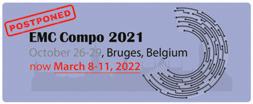
8-11 MARCH, 2022 EMC Compo 2021, Bruges
THE ACHIEVEMENTS IN terms of operating frequency and integration of semiconductor technology are constantly creating new challenges in IC EMC, which must necessarily be addressed at both integrated circuits and system level. Keeping up-to-date is of paramount importance to be successful in this field. EMC Compo 2021 is intended to be a place for the exchange of the latest research achievements and experience in IC-level EMC and it is addressed to researchers both from industry and from academia.
The most recent advances in simulation and measurement techniques, models, standards, tools, and design methodologies will be discussed. A Technical Exhibition will provide tool and equipment manufacturers and suppliers an opportunity to display their products and services to potential clients.
5-8 SEPTEMBER 2022 EMC Europe 2022, Göteborg
DEAR COLLEAGUES, we are very pleased to welcome you to Gothenburg for the EMC Europe 2022 conference.
EMC Europe, the leading EMC Symposium in Europe, will be held at The Swedish Exhibition & Congress Centre in Gothenburg, Sweden, in September 5-8, 2022. We wish to invite and encourage all those working in the area of electromagnetic compatibility to participate in this prestigious event.
Gothenburg’s location in the heart of a region that has the highest population density and strongest industry in Sweden makes the city an ideal choice for exhibitions, conferences and other events. Gothenburg has so many factors that make it an enjoyable place to be. The city is big enough and small enough at the same time. Swedes have voted Gothenburg as the friendliest city in Sweden. And a growing number of international visitors fully agree with them. Gothenburg offers a massive choice of first-class restaurants, cozy pubs, bargain shopping, theatres, museums and events to suit all tastes. The relaxing and friendly atmosphere is just part of the deal. Likewise the fact that all the best entertainment in central Gothenburg is within easy walking distance of the Swedish Exhibition Centre, the venue of EMC Europe 2022.
We are strongly convinced EMC Europe 2022 in Gothenburg will be a great success. Our city is a charming place meeting all necessary requirements for our conference, and our local team is prepared to do their best for your well-being.

SUBMISSION DEADLINES
Paper Submission: February 16, 2022 Workshop & Tutorial Proposal: 16 March 2022 Final Paper Submission: 15 May 2022 Website: www.emceurope2022.org Contact: info@emceurope2022.org

Interference Risks
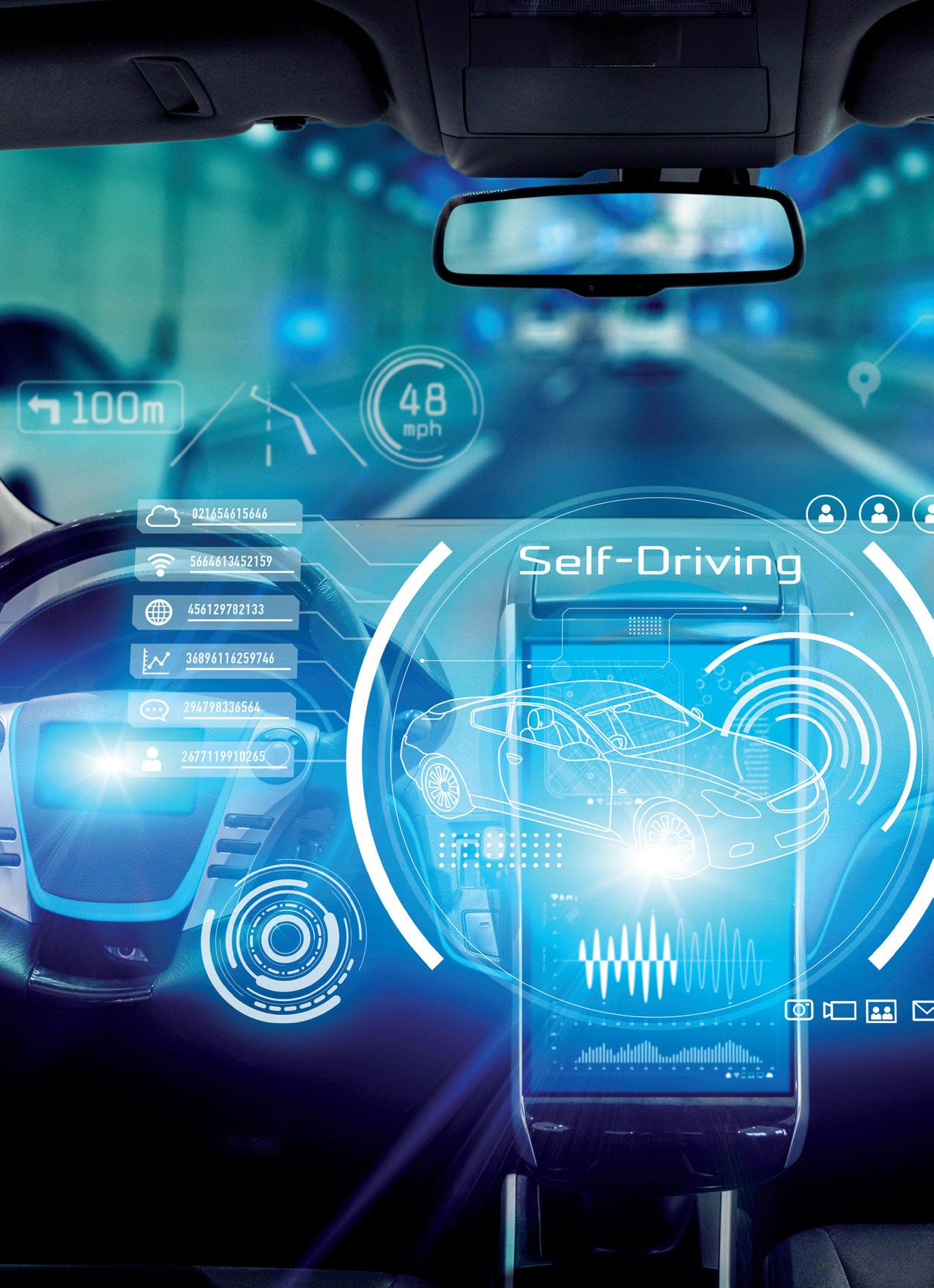
The electrification is an ongoing technical paradigm shift in the auto industry. In this change, wireless power transmission (WPT) for electrical vehicle (EV) charging is a new enabling feature to wirelessly transfer power. However, its potential impact on other systems has not been investigated in depth. As aggravating circumstance, the frequencies for WPT-EV are also used by radio communication systems or services. Since WPT-EV is a new technology, there is a lot of work going on in the world in evolving the technology itself, but also in investigating interference in other systems and setting emission limits. There is, for example, a working group within the ITU-R that is examining the possible impact of WPT-EV on the radio communication services operating in the same or adjacent frequencies. There are several proposed frequency bands for WPT-EV with different characteristics.
Table 1. Predictions over the future use of WPT [3].
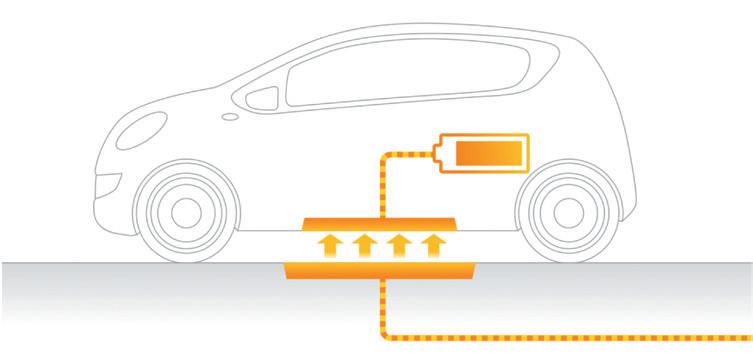
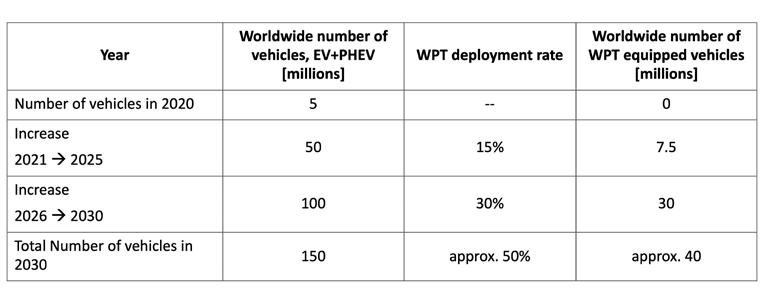
Figure 1. Illustration of wireless transfer of power between a WPT station and a vehicle.
BACKGROUND The automotive industry is undergoing substantial changes in drive train technology. In 2017, for the first time, more than 1000,000 new electric vehicles (EVs) were registered. More than 60% of these EVs were registered in China. Different studies forecast that in ten years, 20% of all newly sold cars will be EVs and in twenty years, around 25% [1]. In this development, new types of charging is proposed, and one of the new forms of charging is wireless power transmission (WPT).
Technologies to transmit electric power wirelessly have been developed since the 19th century, beginning from induction technology. Since the Massachusetts Institute of Technology innovation on non-beam wireless power technology in 2006, technologies of WPT under development vary widely; e.g. transmission via radio-frequency beam, magnetic field induction, resonant transmission, etc. WPT applications are expanding to mobile and portable devices, home appliances and office equipment, and electric vehicles. Nowadays, resonant WPT technologies are coming out to the consumer market. The automotive industry looks at WPT for EV applications in the upcoming future.
In the forecast [2], it is expected that the wireless charging for the electric vehicle market will grow at a compound annual growth rate (CAGR) of 46.8% from USD 16 million in 2020 to USD 234 million by 2027. In particular, the European region is expected to hold the largest market share, much due to availability of well-developed infrastructure enables the incorporation of wireless charging infrastructure in this region. The forecast also states that the implementation of stringent emission norms, increasing focus on R&D activities, and rapid technological changes will drive the wireless charging for electric vehicle market. Stationary charging is projected to be the largest contributor in the wireless charging for electric vehicle market, by charging type, during the same time period.
A substantial growth of the future use of WPT is also presented in [3], shown in Table 1. The growth of WPT the coming years between 2021 to 2025 will be 15 % and will increase even more over the years 2026 to 2030.
There are various WPT applications in use, in experimental, or in implementation phase throughout the world. The frequencies used for WPT for electric vehicle charging (WPTEV) are used also by radio communication systems or services. It is in particular communication systems at lower frequency bands as radio services standard frequency and time signal (SFTS), non-directional beacon (NDB) and differential transmissions for global navigation satellite systems (DGNSS) that might be affected. Since the charging powers can range from a few kW up to the order of 200 kW, the risks for radio interference must be carefully investigated not to harm wireless services. In order to examine this possible impact of WPT-EV applications on existent radio communication services operating in the same or adjacent frequencies, WRC-15 agreed that ITU-R should study this impact via its Resolution 958 (WRC15) as one of the urgent studies required in preparation for the 2019 World Radiocommunication Conference (WRC-19).
Studies of coexistence between WPT and radio services have started within the International Telecommunication Union (ITU).
There are a number of standards regulating different aspects of wireless charging. A recent standard is SS-EN ISO 19363:2021, regulating different aspects of safety and performance of WPT-EV systems. For emissions, other standards often refer to CISPR 11 that includes limits on radiated magnetic and electric fields. In CISPR 11 equipment is classified in two groups, where group 2 includes equipment that generate RF energy intentionally. For frequencies below 150 kHz limits are not specified yet. For WPT- EV systems, the operating frequency is below 150 kHz and specifying limits on the radiated EM-field is important to ensure coexistence with other systems.
BRIEF DESCRIPTION OF THE TECHNIQUE WPT uses the basic principle from transformer coupling via a magnetic core. A transformer consists of a primary and a secondary side. Each side uses a coil that is wired around a magnetic core. The transformer is electrically fed with a high-frequency power supply at the primary side and the output is used for charging the rechargeable energy storage system (RESS) at the secondary side. In WPT for EV, the transformer is broken up into two pieces, separated by an air gap, see Figure 1 and 2. The primary side is typically located at the ground and the secondary side is located in the vehicle. The vehicle is positioned over the primary side so that the two sides are electromagnetically connected. Special circuitry is used to match the two sides so that resonance is achieved during the charging process.
With this solution, an efficiency factor in the order of 80 - 95% is possible to achieve [3], depending on frequency band used. Thus, about 5-20% of the power fed to the primary side will be lost as e.g. heat and radiated power. It is therefore of high importance that the resonance is achieved accurately during charging, not to increase the unintentional radiated electromagnetic interference. The resonance peak is typically narrow with respect to frequency variation. Other physical variations can also affect the electromagnetic properties of the coupling. It is therefore of high importance that this resonance can be monitored and adjusted if needed. As a comparison, the efficiency factor of a transformer coupling without this air gap could be in

Figure 2. Schematic picture of the principal technology for WPT for EV. The transformer is divided into two parts, separated by an air gap.
Table 2. Technical parameters for WPT [3].

the order of 99%. Thus, breaking up the circuit and introducing the air gap leads to large losses. These losses can be reduced, but not fully eliminated. This fact also means that WPT is not an optimal technology with respect to power efficiency in general, compared to if e.g. a physical wired connection is used. The minimum power transfer efficiency must be greater than 85 % to fulfill ISO 19363:2020, for center alignment of the system.
TECHNICAL PARAMETERS AND FREQUENCY BANDS Technical parameters and frequency bands In Table 2, proposed power levels and frequency bands are shown for different kinds of applications [3]. The values are not decided for these, and other proposals exist. It is mainly in the 79-90 kHz band where the development is ongoing and where there are available products in the market.
RADIATED EMISSION LEVELS FROM WPT Emission limits regulate the maximum values of an electromagnetic field at a certain distance (or at several distances) at different frequencies. For WPT systems there are several standards that may apply. A survey of three different standards and regulations of WPT for EVs charging can be found in [4], comparing IEC 61980–1, SAE J2954 RP and ISO/PAS 19363:2017 and concluding that the regulations have many common points, but the limits on EMC differ. IEC (International Electrotechnical Commission) prepare and publicise of international standards for all electrical, electronic and related technologies. SAE International, previously known as the Society of Automotive Engineers, is a U.S.-based association that develop standards. ISO (International Organization for Standardization) is composed of representatives from various national standards organizations that sets international standards.
Of those three regulations, only SAE J2954 RP is currently having a limit for frequencies below 150 kHz stating that in the operating frequency range 79–90 kHz the field limit peaks up to 82.8 dBµA/m.
Besides the specific standards for wireless power transfer systems, there are standards for short-range devices (SRD) including inductive loop systems. There is also an ongoing work within CISPR with a standard for different classes of WPT systems for vehicles.
Within Europe, there are two ETSI harmonized European standards that treat WPT-systems:
• one for wireless power transmission systems (ETSI EN 303 417) and • one for short-range devices including induc tive loop systems (ETSI EN 300 330).
Both standards treat general systems for wireless power transfer systems used also for other purposes than vehicle charging. Hence, the limits are probably going to be revised to include high-power WPT systems. Limits for spurious emissions from WPT-systems are specified in the two ETSI harmonized European standards described earlier [2,3] from 9 kHz and above. However, it is possible that these limits will be adjusted for WPT-EV applications and permit higher values.
Within CISPR, there is an ongoing work to develop radiated emission limits for WPTEV. The work with the emission limits is currently not finalized. There are proposed limits that are used for coexistence analysis within the ITU. In CISPR, the limits are expressed for Class A and for Class B systems depending on intended use and power. For Class B systems is the limit for medium power WPT-systems 72 dBµA/m at 20 kHz and 67.8 dBµA/m at 85 kHz measured at 10 m distance. For Class A systems, the limits for high power WPT-systems are 107 dBµA/m at 20 kHz and 102.8 dBµA/m at 85 kHz.
IMPACT OF WPT INTERFERENCE To exemplify how the interference level might increase due to the radiated electromagnetic (EM) fields from WPT, the received interference level from the WPT source is here compared to the interference level caused by atmospheric noise. The reason for the comparison with atmospheric noise is that the atmospheric noise constitutes a substantial part of the noise always present at the receiver at lower frequencies and therefore creates a lowest level of what a radio system may receive. By analysing at what distances a WPT station may be located and still exceed the always present atmospheric noise can hence be used as a measure of how devastating the WPT might interfere. Consequently, the longer distance from a receiving antenna the WPT need to be at, the worse interference it is.
The analysis is performed at two frequencies: 20 kHz, which is the frequency band proposed for heavy duty vehicles, and 85 kHz, which is proposed mainly for passenger vehicles. At these frequencies, it is assumed that the WPT installation exactly fulfils either the CISPR 11 standard for Class A or Class B equipment.
The emission standards have a limit on the magnetic field strength at 10 metres distance from the WPT system. For a frequency of 20 kHz, the highest limit is 107 dBµA/m for Class A equipment and 72 dBµA/m for Class B equipment, according to the proposed CISPR 11 standard.
Analysis of the propagation of the EM field radiated from WPT is somewhat complicated by the fact that its power is dominated at lower frequencies and hence the analysis may need to be done in the near field region of the WPT source. The interference level is converted to other distances by assuming that the attenuation of the electrical field in the near field is assumed to be 40 dB/dec. In the far field region, the attenuation is assumed to be 20 dB/dec up to distances longer than about 100 km, where the attenuation is larger.
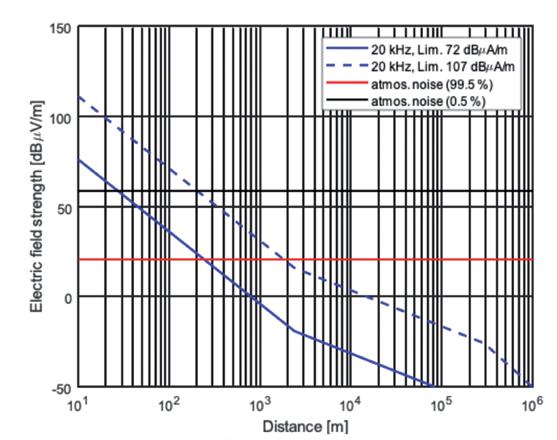
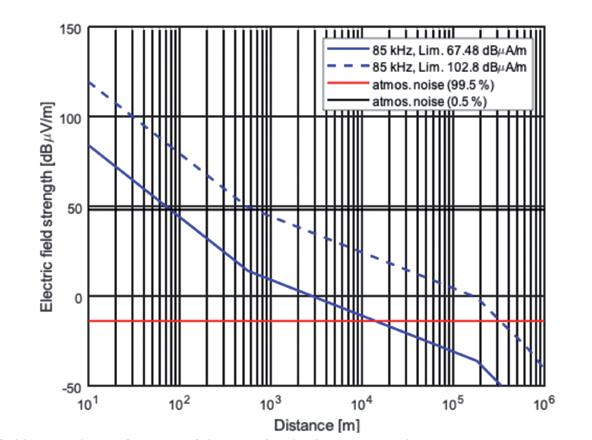
Figure 3. Electric field strength at 20 kHz calculated from the proposed CISPR 11 limits. Figure 4. Electric field strength as a function of distance for the frequency 85 kHz.
The atmospheric noise is described in an ITU recommendation on radio noise as a noise factor in terms of minimum and maximum values exceeded with a probability of 99.5% and 0.5% [5]. In this analysis, the emissions from WPT-systems are compared to those two levels of the atmospheric noise. From the noise factor, the electric field strength in a receiving antenna is calculated for the measurement bandwidth in the standards (200 Hz for frequencies from 9 kHz to 150 kHz).
Figure 3 shows the electric field strength as a function of distance from the WPT for the frequency 20 kHz and for the maximum limits from the proposed CISPR 11 standard. Furthermore, the atmospheric noise levels are shown as the minimum value (red line, the level that is exceed with a probability of 99.5%) and maximum value (black line, the level that is exceed with a probability of 0.5%).
The figure shows that an operating WPT station emitting 72 dBuA/m (class A) needs to be located at a distance larger than 27 m from a potential receiving antenna to not exceed the 0.05%-level of the atmospheric noise. To exceed the 99.5%-level of the atmospheric noise, which is lower than the 0.05%-level, the distance needs to be over 250 m. If the operating WPT station is a class B equipment and emit 107 dBuA/m, the distances need to increase to still be in level of the atmospheric noise. It is clear that the WPT system may impact radio systems at quite long distances. Furthermore, the figure also shows the change of attenuation model for the near- and far field at a distance of approximatively 2 km.
Figure 4 shows the corresponding results for 85 kHz. The emission limits are lower at 85 kHz than for 20 kHz, but at the same time the atmospheric noise (0.5 % and 99.5 %) is also lower at higher frequencies. In addition, the near field limit is also shorter for higher frequencies. The interference from an operating WPT station exceeds the 0.05- and the 0.95% levels of the atmospheric noise for distances up to about 80 m and 15 km for Class B and 600 m and 300 km for Class A, respectively.
CONCLUSIONS Wireless power transmission (WPT) for electrical vehicle (EV) charging is a new and enabling feature for the development of the electrification of the automotive market. For this purpose, new standards are under development to include WPT-EV systems, although some are not yet finalized. The fact that WPT transfer high power, there is also a risk that the electromagnetic emission from WPT stations in operation may interference with radio communication services, especially at lower frequencies. From the analysis and results shown here, it is clear that a WPT station that emits in line with the CISPR 11 requirements may increase the interference levels at a receiving antenna at quite large distances. REFERENCES [1] Casper, R., Sundin, E., “Electrification in the automotive industry: effects in remanufacturing,” Jnl Remanufactur (2020), https://doi.org/10.1007/s13243020-00094-8.
[2] https://www.marketsandmarkets.com/
Market-Reports/wireless-ev-charging-market-170963517.html#:~:text=%5B203%20
[3] “Assessment of impact of wireless power transmission for electric vehicle charging (WPT-EV) on radiocommunication services,” Annex 2 to ITU document 1B/341-E, 30 November 2018.
[4] F. Grazian, W. Shi, J. Dong, P. van Duijsen, T. B. Soeiro and P. Bauer, “Survey on
Standards and Regulations for Wireless
Charging of Electric Vehicles,” 2019 AEIT
International Conference of Electrical and
Electronic Technologies for Automotive (AEIT AUTOMOTIVE), 2019, pp. 1-5, doi: 10.23919/EETA.2019.8804573.
[5] Recommendation ITU-R P.372-13 “Radio noise,” September 2016.
Sara Linder, Karina Fors and Kia Wiklundh
Swedish Defence Research Agency (FOI)
Svar på frågor till självstudiekursen Stoppa störningar
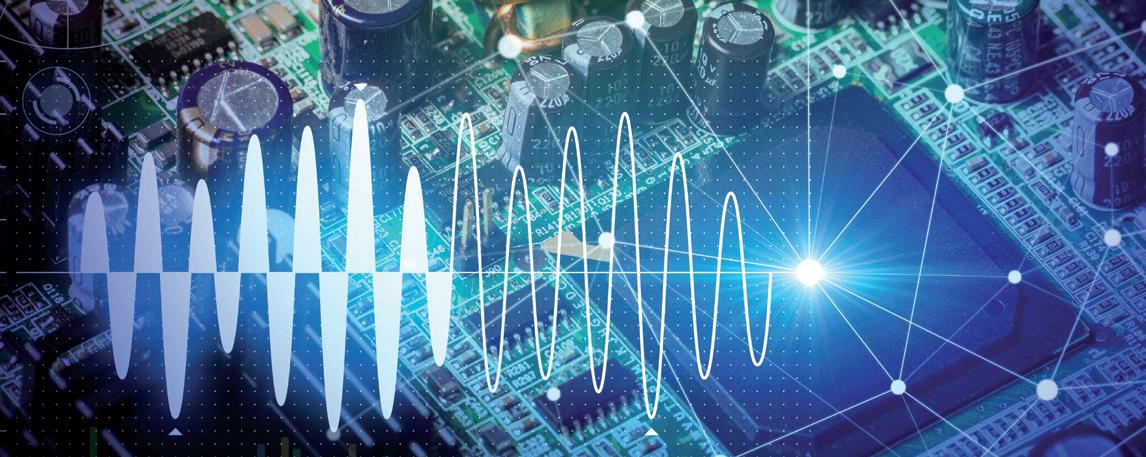
SVAR TILL EMC-INTRODUKTION: VAD ALLA BÖR KÄNNA TILL OM EMC
Fråga: Vad betyder förkortningen EMC? Svar: B. Electro Magnetic Compatibility D. Elektromagnetisk förenlighet (samexistens)
Fråga: När har man uppnått EMC? Svar: A. Utrustning med el- och elektronikkomponenter fungerar utan att störa varandra (apparat till apparat). D. Apparater blir inte påverkade av naturliga elektromagnetiska fenomen.
Påstående:EMC behandlar: Svar: B. Apparaters och utrustnings elmiljöegenskaper E. Elektromagnetiska fenomens påverkan på apparater
Fråga: Vilka av följande är EMC-egenskaper? Svar: B. Elektromagnetisk fältemission C. Elektromagnetisk miljöpåverkan D. Tålighet mot elektromagnetisk påverkan
Fråga: Ett objekt har ändliga, dubbelriktade EMC-egenskaper; objektet har en viss tålighet mot elektromagnetisk påverkan och ger ifrån sig elektromagnetisk emission. I vilket frekvensområde? Svar: Från 0 Hz till 300 GHz
Fråga: Varför är det lönsamt att anlita EMC- specialister? Svar: B. Specialisten har erfarenhet från många skiftande projekt. C. Tillsammans med specialist hittas förebyggande åtgärder lättare. Fråga: Varför EMC? Svar: A. Ökad kvalitet. B. Lagkrav. C. Störningsfri funktion.
Fråga: Hur skapar man produkter med bra EMC-egenskaper? Svar: A. Uteslut el. C. Konstrueras och byggs in i objektet enligt en EMCkravspecifikation D. God installationsteknik.
Fråga: Vad behövs för att lyckas med EMC? Svar: A. Kunskap, erfarenhet och kontinuitet i EMC-arbetet. C. Konstrueras och byggs in i objektet enligt en EMC-kravspecifikation. D. Tid och resurser för EMC-aktiviteter.
Fråga: Vilka grupper i ett företag berörs av EMC- arbetet? Svar: A. Konstruktörer, el och elektronik. B. Mekanikkonstruktörer. C. Inköpare. D. Projektledare och produktspecifikatörer. E. Jurister avseende CE-märkning eller andra lagkrav. F. Provningstekniker. G. Mjukvarukonstruktörer. H. Service- och underhållstekniker. I. EMC-specialister. J. Ledning. K. El- och elektronikentreprenörer. L. Installatörer. Fråga: Vad är en störning i EMC-världen? Svar: A. Ett potentiellt störande elektromagnetiskt fenomen. C. Funktionsavvikelse. E. Omotiverat omstart. F. Minnesförlust.
Fråga: Vad betecknar ”disturbance”? Svar: A. Ett potentiellt störande elektromagnetiskt fenomen. F. Störningsfenomen.
Fråga: Vad betecknar ”interference”? Svar: B. Funktions- eller prestandaavvikelse orsakad av ”EM-disturbance”. C. Funktionsavvikelse. E. Omotiverat omstart.
Fråga: Vilket tillstånd eftersträvas? Svar: B. EMC
Fråga: Vilka EMC-egenskaper är viktiga för den egna produkten? Svar: B. Tålighet mot fält. C. Tålighet mot ESD.







